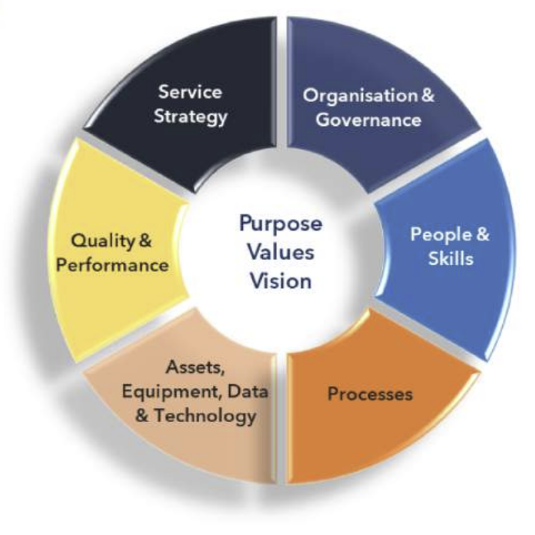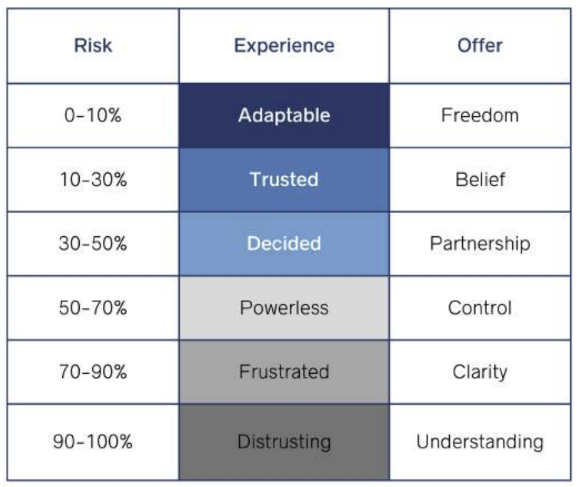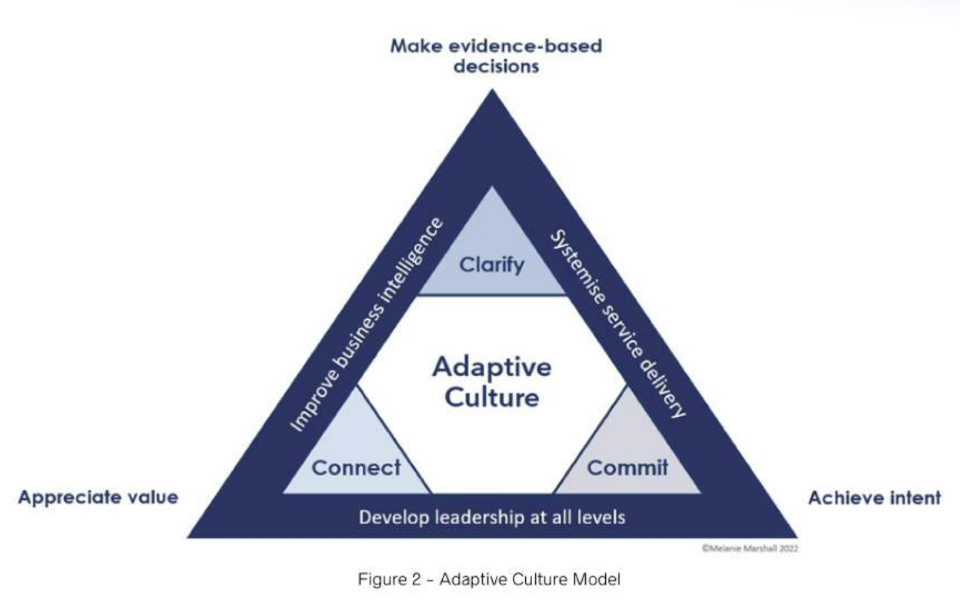Leaders and teams are enabled or constrained by people, processes, policies, and technology that were inherited over time. It is this organisational ecosystem that drives performance and culture.
What we inherit is a combination of good and bad. With the relentless pace of service delivery and management, rarely do we get an opportunity to work on the business, or design work culture and services from scratch.
Culture surveys and reporting dashboards measure trends and the current state, but often the information shared doesn’t help leaders prioritise what, or how to change in a way that is practical and achievable.
With limited resources, it’s easy to become overwhelmed – without a great culture it can feel like being hit by big ocean waves with limited understanding or skills to get on a surfboard and ride them. No one wants to get dumped, and we need to be able to swim.
Organisations and teams that are healthy and sustainable are like surfers adapting to changing conditions and needs – they understand the waves, respect what they can control, and commit to making the most of what they have to create great experiences.
“An organization’s ability to learn, and translate that learning into action rapidly, is the ultimate competitive advantage” – Jack Welch
The shared purpose of any organisation and team is to provide either products and/or services for people. The ability to do that is all about performance.
A 2019 report on high-performing teams by The Oxford Review sampled 59 high-quality multi-national research papers. The report defined a high-performing team as one that exceeds all reasonable expectations and produces extraordinary results.
Studies have shown that high-performing teams enjoy high levels of engagement, work satisfaction, and cultural eco-systems that enable them to think, plan, and adapt across multiple functions, disciplines, and domains.
Key characteristics of high-performing organisations include:
When people blame executives and the system for poor performance, what they’re really saying is that the foundations of the business are weak or no longer work.

With the ever-increasing pace of change – services and frameworks that were established even a couple of years ago may no longer be the right fit for what is needed now, or for what is on the horizon.
Most senior executive teams invest in reviewing their strategy annually or at least every couple of years, but few go deeper into understanding whether the strategy is working and operationally viable to maintain.
A 2023 study identified four main organisational enablers for success:
To put this into practice, the difference between under performing and high performing organisations is the strength of the business foundations (Figure 1) that give and enable service delivery. These foundations make or break your culture by design.
A little like a surfboard needing repair, or a surfer not fit enough to paddle and ride waves, business foundations, if not reviewed and cared for regularly can easily fall into a state of disrepair and poor health.
Business foundations aren’t just something to work on when you need to implement change, they are essential to build, govern, deliver, and proactively improve.
Business foundations either support or hold people back from performing – if they’re frequently constrained by poorly designed and maintained work practices, people’s experience suffers, and safety and performance are at risk.
As a minimum, people need honesty about existing operations, multi-disciplined partnerships, data and reporting for evidence-based decisions, and assurance that what they do will be progressively developed, with practical, outcome driven approaches to succeed.
The easier it is for individuals and cross-functional teams to understand, discuss, and collaboratively manage risk, the better the organisation will perform.
While leaders may commonly drive and be accountable for organisational culture, ownership and responsibility are also at the front line.
The industry fix often involves bringing external experts in, but over the last 20 years, there have been multiple studies on the impact this can have when consultants are relied on too heavily to solve foundational problems. Put into context, employees often feel threatened, devalued, excluded, and professionally at risk as innovation is outsourced and their skills diminish.
Furthermore, managers and employees are significantly more likely to reject externally provided solutions, exert control by withholding valuable information, or change recommendations to defend themselves. Rejection also occurs when solutions are not aligned with psychosocial needs.
Internal workers know when things could be better because they experience the business every day, and remain when the project ends, or the consulting dollars run out.
Employee voice and meaningful co-design of solutions with people who deliver and receive services are essential for sustainable success.
To identify risk, it’s worth checking where people are, and what they need to be offered on the risk/experience ladder (Table 1).


“You cannot continuously improve interdependent systems and processes until you progressively perfect interdependent, interpersonal relationships.” – Steven Covey
For sustainable outcomes, an adaptive culture that enables people to lead at all levels, make evidence-based decisions, and provide expertise efficiently and effectively is vital.
Leveraging over 150 peer-reviewed research papers and reports on culture, leadership, trust, organisational agility, and transformation, the Adaptive Culture Model (Figure 2) highlights the foundational capabilities needed for people and organisations to thrive.
For individuals and teams to deliver as one team they need to connect with each other, clarify what needs to be delivered and how, and commit to the work to achieve it.
Customer experience is the direct result of the flow and freedom workers have to deliver. People’s assessment of a workplace is based on their experience across three domains.
Feeling and being empowered. It is the ability of everyone in the organisation, business area, and team to own what they do and how for the best possible outcomes.
Access to meaningful data and information to make evidence-based decisions in an efficient and effective manner. For example, timely reporting that is easy to understand and use.
People, processes, policies, and technologies are integrated to optimise service delivery, management, and the employee/customer experience.
We mostly need leadership that:
Organisational challenges generally don’t happen overnight, and neither will the solutions. With a finite amount of resources and the need to maintain elements of business as usual activities, people need to establish why things need to be done differently, and accept a level of responsibility and accountability for making it happen. With all big goals, it’s far more reasonable and less stressful to break it into phases, and test and adjust with teams as you go.
Conduct a review of the culture with a business lens to identify what is needed
Prioritise the services and workflows that matter, design how they can be better
Acknowledge what you have and develop the foundations further to build confidence
Establish routines that inform, drive and support innovation toward the vision over time
In research and practice, the lessons on organisational performance are clear – business foundations that drive culture need to continuously adapt.
There is never a single contributor to success or failure. When it comes to culture – everyone is responsible.
Two key questions for senior executives to consider:
Leaders and teams can’t, and don’t need to, start from scratch to improve.
Partner with the people responsible for service delivery and aim to improve along a healthy, sustainable continuum.
In an ocean filled with uncertainty and boundless opportunities, start with the basics together, and commit to becoming better gradually.
You’ve got this!
Melanie Marshall
Wolf Pack Facilitator